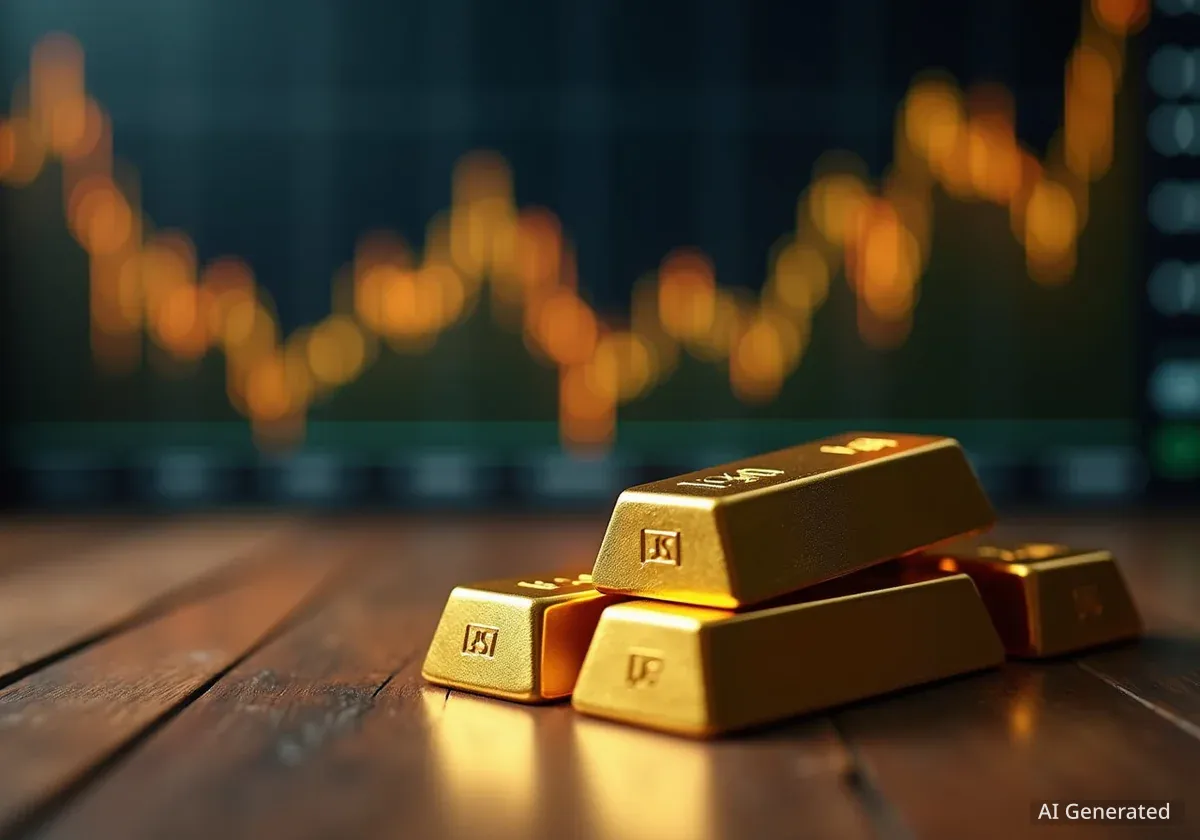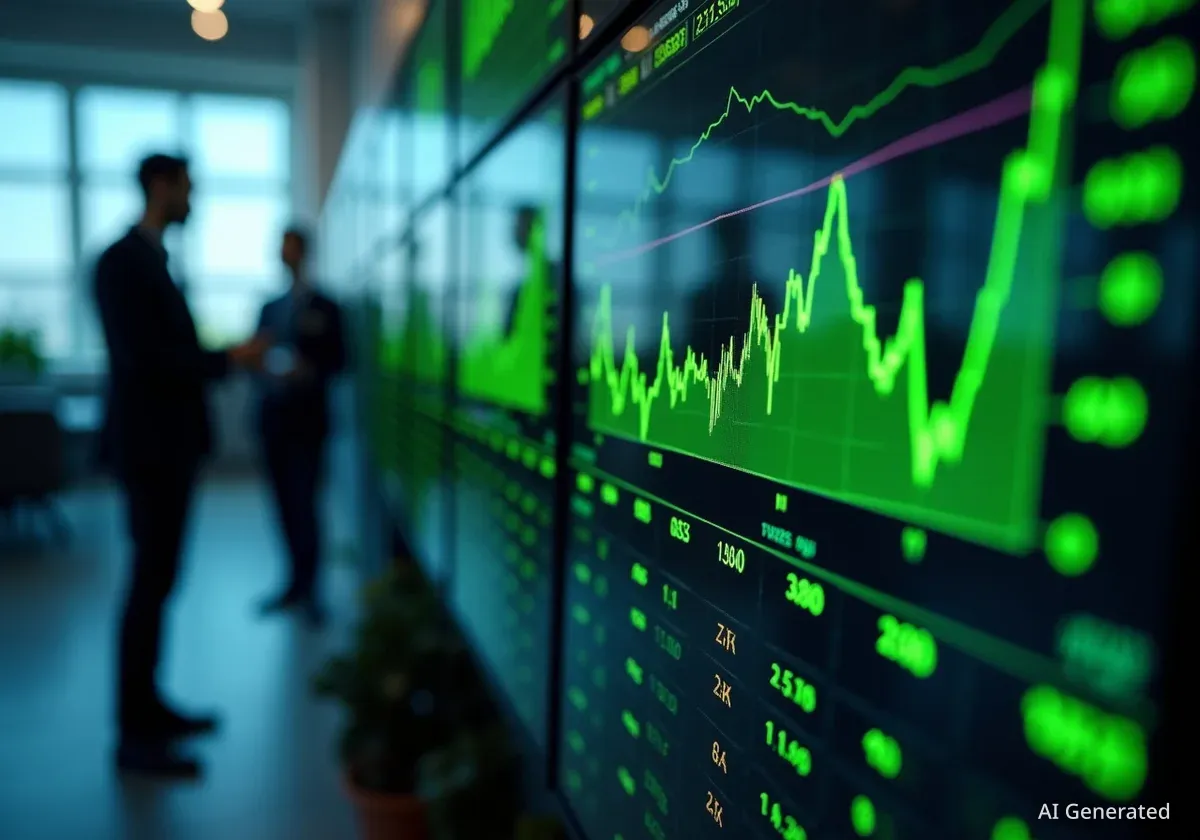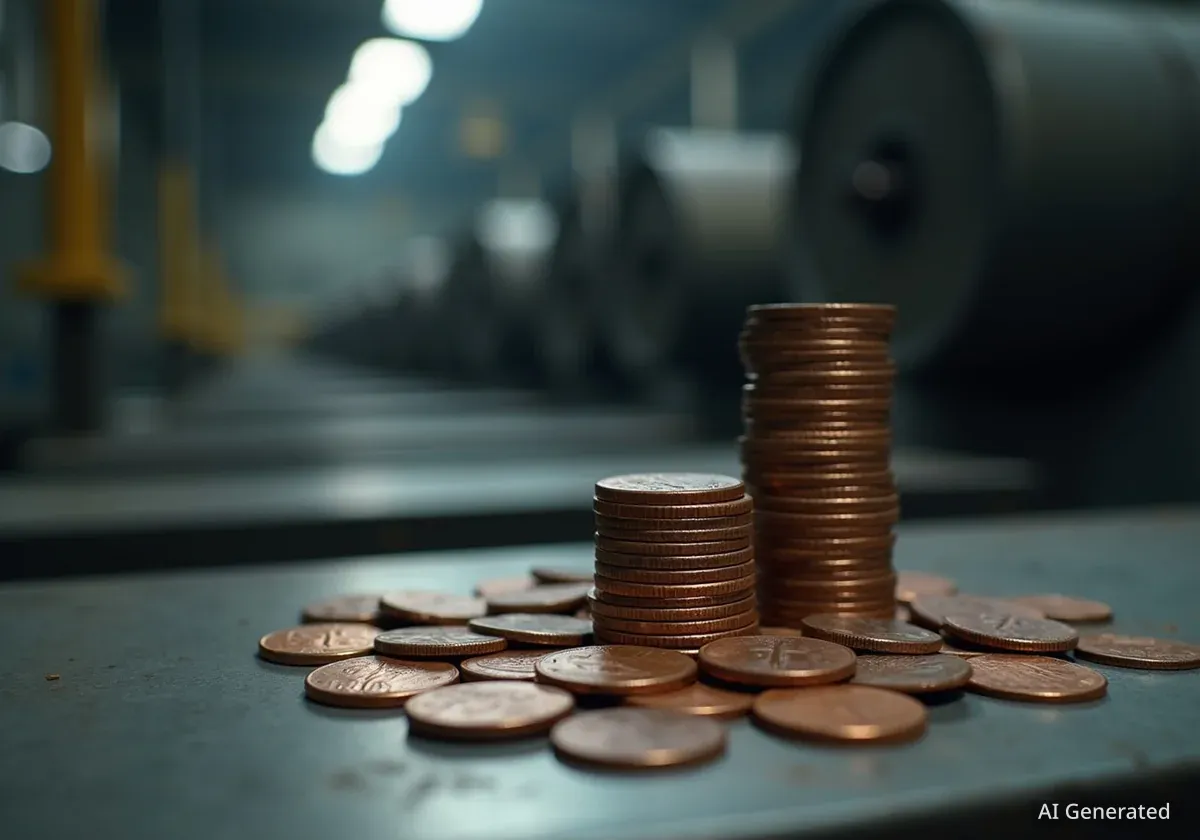Gold prices in India increased on Monday, reflecting shifts in global economic sentiment and ongoing geopolitical tensions. The price of the precious metal is responding to several key factors, including the U.S. Federal Reserve's recent interest rate decisions and persistent international uncertainties that enhance gold's appeal as a safe-haven asset.
Key Takeaways
- Gold prices in India reached 10,470.47 Indian Rupees (INR) per gram, a slight increase from the previous week.
- The U.S. Federal Reserve's dovish monetary policy and indications of future rate cuts are providing support for gold prices.
- A stronger U.S. dollar and record-high stock markets are currently limiting more significant gains for the precious metal.
- Geopolitical events, including trade tariff disputes and military interceptions in Europe, are contributing to market uncertainty and supporting gold's safe-haven status.
Domestic Gold Price Movement in India
On Monday, the price of gold in India saw a modest rise. According to market data, the cost for one gram of gold was recorded at 10,470.47 Indian Rupees (INR). This represents an increase from Friday's closing price of 10,451.83 INR.
When measured in tolas, a traditional unit of mass in the region, the price also moved higher. A tola of gold was priced at 122,125.50 INR on Monday, up from 121,908.10 INR at the end of the previous week. These figures are calculated based on international gold prices and the current USD/INR exchange rate.
Gold Price Snapshot (Monday)
- Per Gram: 10,470.47 INR
- Per 10 Grams: 104,704.70 INR
- Per Tola: 122,125.50 INR
- Per Troy Ounce: 325,668.60 INR
Federal Reserve Policy a Key Driver for Gold
A significant factor influencing gold prices is the current monetary policy stance of the U.S. Federal Reserve. The central bank recently lowered its benchmark interest rate for the first time since December, citing concerns over a potential slowdown in the U.S. labor market.
The Fed has also signaled the possibility of two additional rate cuts before the end of the year. Lower interest rates typically reduce the opportunity cost of holding non-yielding assets like gold, making the precious metal more attractive to investors. This outlook has created a supportive environment, or tailwind, for gold prices globally.
Powell's Cautious Tone and Market Expectations
Despite the rate cut, Federal Reserve Chair Jerome Powell has maintained a cautious tone. He stated that the move was a "risk management cut" and emphasized that risks of inflation are tilted to the upside. Powell also mentioned that the Fed is not in a hurry to make further changes and will assess the situation on a "meeting-by-meeting" basis.
"I don't feel the need to move quickly on rates... the Fed is in a meeting-by-meeting situation regarding the outlook for interest rates," Powell noted, indicating a data-dependent approach.
However, many traders believe the central bank will need to act more aggressively than it has indicated. Market bets are now pricing in the possibility that the short-term interest rate, currently in the 4.00%-4.25% range, could fall below 3% by the end of 2026. This divergence between official guidance and market expectation is a source of ongoing market debate.
Interest Rates and Gold
Gold does not pay interest or dividends. When interest rates are high, investors can earn a better return from assets like bonds or savings accounts. When interest rates fall, the appeal of these income-generating assets diminishes, making gold a relatively more attractive investment for preserving wealth.
Countervailing Forces: Strong Dollar and Equities
While the Fed's policy is supportive of gold, other market forces are acting as a counterbalance. The U.S. dollar strengthened to a one-week high following Powell's remarks, which can make gold more expensive for buyers using other currencies.
Additionally, global stock markets have been performing exceptionally well, reaching record highs. This optimism in equities tends to draw investment away from safe-haven assets like gold. During periods of strong stock market performance, investor appetite for risk increases, which can cap the potential upside for the precious metal.
Geopolitical Tensions Underpin Safe-Haven Demand
Persistent geopolitical risks continue to provide a floor for gold prices by boosting its appeal as a safe-haven asset. Investors often turn to gold during times of international instability to protect their capital.
Several ongoing situations are contributing to this uncertainty:
- U.S. Trade Tariffs: The U.S. Supreme Court has scheduled arguments for November 5 regarding the legality of global tariffs imposed by President Donald Trump. While a lower court ruled that the president overstepped his authority, the tariffs remain active during the appeal process, creating uncertainty for global trade.
- Eastern European Tensions: NATO forces recently intercepted three Russian MiG-31 fighter jets that entered Estonian airspace. President Trump commented on the incident, stating he would help defend European Union members if hostilities from Russia were to escalate. This event highlights ongoing military tensions that keep investors on edge.
These geopolitical factors ensure that demand for gold as a hedge against risk remains intact, providing a strong argument for potential further gains in its price.
Understanding Gold as an Investment
Gold has been a fundamental part of human history, serving as both a medium of exchange and a store of value. Today, its role has evolved, but it remains a critical component of the global financial system and a popular choice for investors seeking stability.
Why Investors Choose Gold
Investors are drawn to gold for several primary reasons. It is widely considered a safe-haven asset, meaning its value tends to hold or increase during periods of economic or political turmoil. It is also viewed as a hedge against inflation, as its price often rises when the purchasing power of currencies like the U.S. dollar declines. Because gold's value is not tied to any single government or financial institution, it offers a degree of independence from traditional financial systems.
The Role of Central Banks
Central banks are among the largest holders of gold worldwide. They maintain gold reserves to diversify their assets and support the stability of their national currencies. According to the World Gold Council, central banks collectively purchased 1,136 tonnes of gold in 2022, the highest annual amount on record. Emerging economies such as China, India, and Turkey have been particularly active in increasing their reserves in recent years, viewing it as a way to enhance economic confidence.





